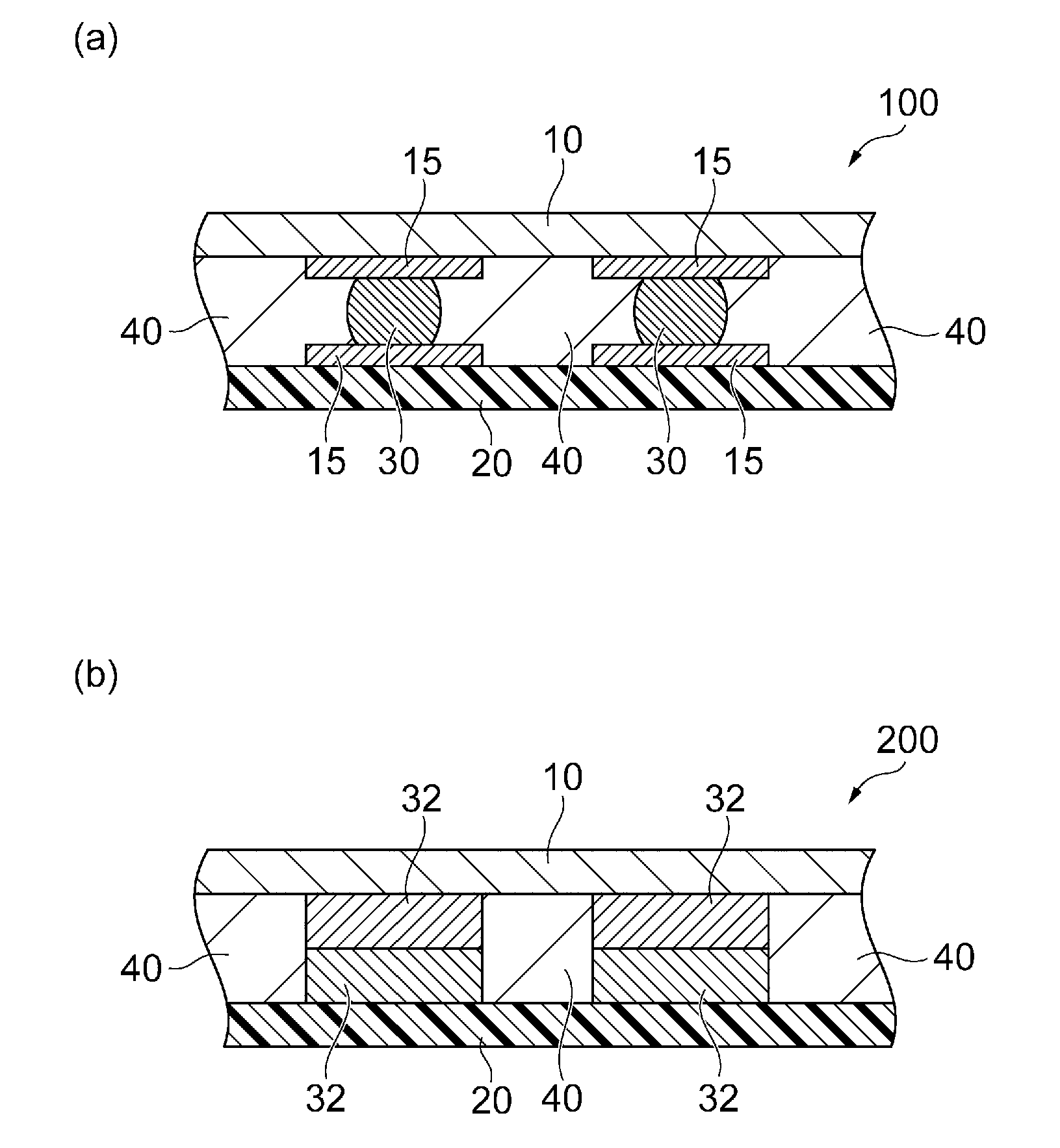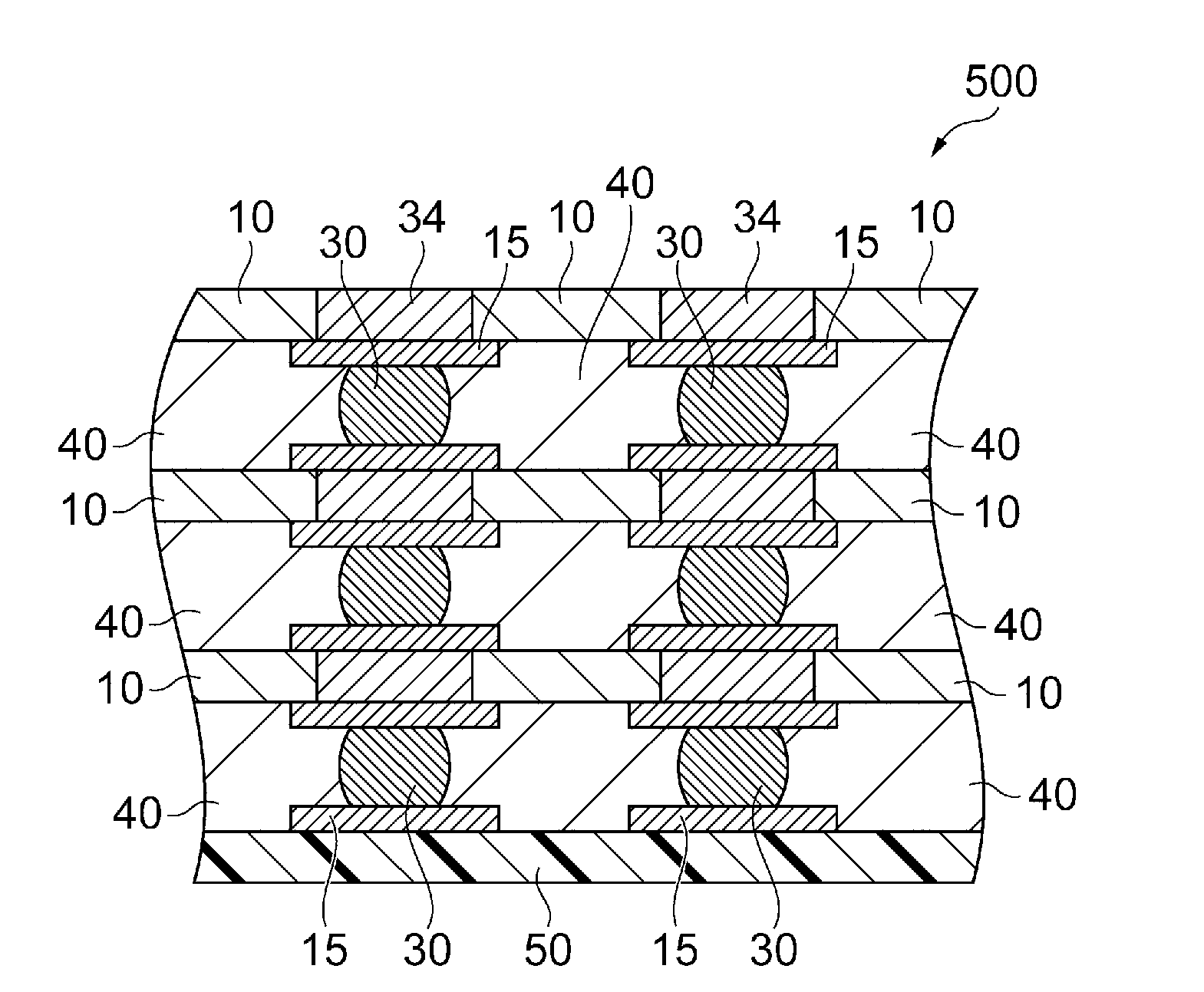Adhesive composition, method for manufacturing semiconductor device, and semiconductor device
A manufacturing method and semiconductor technology, applied in semiconductor/solid-state device manufacturing, semiconductor devices, semiconductor/solid-state device components, etc., can solve the problems of narrowing the gap between semiconductor chips and substrates, long-term productivity, and inability to inject, and achieve connection Excellent reliability and insulation reliability, improved electrical conductivity, and improved reflow resistance
- Summary
- Abstract
- Description
- Claims
- Application Information
AI Technical Summary
Problems solved by technology
Method used
Image
Examples
Embodiment 1
[0217] 100 parts by mass of epoxy resin (EP1032), 7.5 parts by mass of curing agent (2PHZ), 175 parts by mass of filler (SM silica), 25 parts by mass of flux activator (diphenolic acid) and MEK solvent according to the solid content of 60 Feed in the form of mass %, add microbeads with a diameter of 0.8 mm and microbeads with a diameter of 2.0 mm in the same amount as the solid content, and stir using a bead mill (Fritsch Japan Co., Ltd., planetary fine pulverizer "P-7") 30 minutes. Next, after adding 100 mass parts of polyimide A (in terms of solid content), and stirring again for 30 minutes by the bead mill, the beads used for stirring were removed by filtration, and the resin varnish was obtained.
[0218] The obtained resin varnish was coated on a substrate film (manufactured by Teijin DuPont Film Co., Ltd., trade name "PUREX A53") using a small precision coating device (Yashii Seiki Co., Ltd.), and placed in a clean oven (manufactured by ESPEC Co., Ltd.). , and dried at ...
Embodiment 2~3 and comparative example 1~6
[0220] Except having changed the composition of the raw material used like following Table 1, it carried out similarly to Example 1, and produced the film adhesive of Examples 2-3 and Comparative Examples 1-6.
[0221] Hereinafter, the evaluation method of the film adhesive obtained by the Example and the comparative example is shown.
[0222]
[0223] The film-like adhesive was cut to a predetermined size (length: 37 mm×width: 4 mm×thickness: 0.13 mm), and was cured by holding at 180° C. for 3 hours in a clean oven (manufactured by ESPEC Corporation). After curing, the elastic modulus at 260° C., which is the reaching temperature of the reflow oven at the time of reflow resistance evaluation, was measured using a viscoelasticity measuring device (manufactured by Rheometrics, trade name “RASII”). The measurement was carried out at a temperature range of -30°C to 270°C, a heating rate of 5°C / min, and a measurement wavelength of 10Hz.
[0224]
PUM
| Property | Measurement | Unit |
|---|---|---|
| glass transition temperature | aaaaa | aaaaa |
| particle size | aaaaa | aaaaa |
| glass transition temperature | aaaaa | aaaaa |
Abstract
Description
Claims
Application Information
 Login to View More
Login to View More - R&D
- Intellectual Property
- Life Sciences
- Materials
- Tech Scout
- Unparalleled Data Quality
- Higher Quality Content
- 60% Fewer Hallucinations
Browse by: Latest US Patents, China's latest patents, Technical Efficacy Thesaurus, Application Domain, Technology Topic, Popular Technical Reports.
© 2025 PatSnap. All rights reserved.Legal|Privacy policy|Modern Slavery Act Transparency Statement|Sitemap|About US| Contact US: help@patsnap.com



